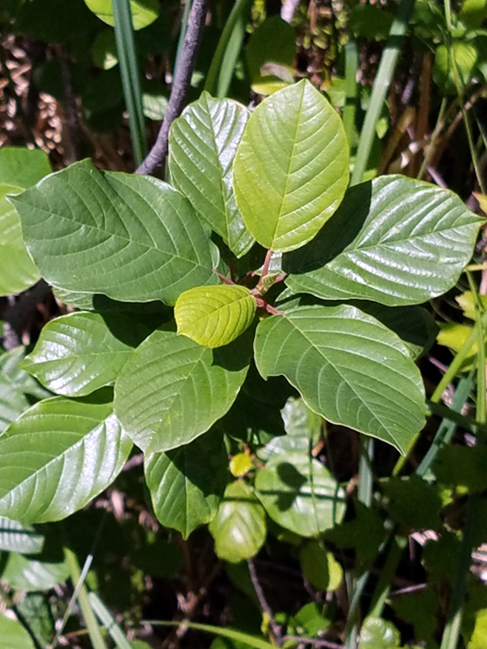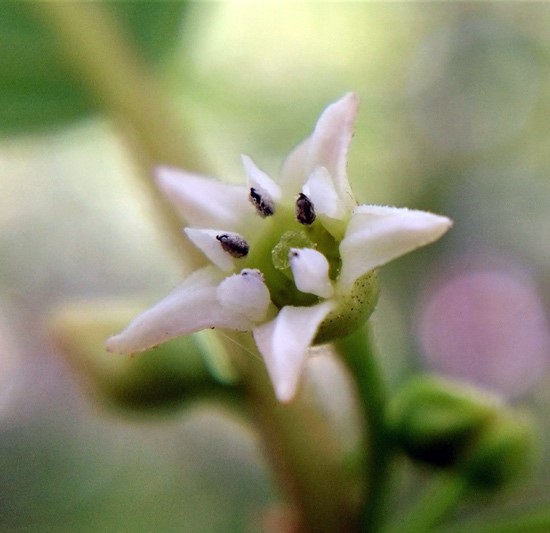How To Control Glossy Buckthorn In Seconds
Title: How to Control Glossy Buckthorn in Seconds
Introduction:
Glossy buckthorn is an invasive shrub that can quickly take over an area. It outcompetes native plants for water and sunlight, and it can contribute to erosion. If you have glossy buckthorn on your property, you'll want to control it as soon as possible.
There are a few different ways to control glossy buckthorn, but one of the most effective methods is to cut the stems close to the ground and then apply an herbicide to the freshly cut stump. This method is quick and easy, and it can be done in seconds.
Main Content:
Step 1: Cut the stems close to the ground.
Use a sharp knife or saw to cut the stems of the glossy buckthorn close to the ground. Be sure to cut all the way through the stems, so that they don't resprout.
Step 2: Apply herbicide to the stumps.
Use a brush or a spray bottle to apply an herbicide to the freshly cut stumps. The herbicide should be a glyphosate-based product, such as Roundup.
Step 3: Mark the treated stumps.
Once you've applied the herbicide, mark the treated stumps with a piece of brightly colored tape or string. This will help you to avoid accidentally treating them again in the future.
Conclusion:
Controlling glossy buckthorn in seconds is easy to do with the right method. By following these simple steps, you can help to keep this invasive shrub from taking over your property.
For more information about glossy buckthorn, please visit Home Gardening. This website provides a wealth of information about the plant, including its identification, biology, and management.
FAQ of glossy buckthorn
- What is glossy buckthorn?
Glossy buckthorn is a non-native invasive shrub that is native to Europe and Asia. It was introduced to North America in the early 1800s as an ornamental plant, but it has since escaped cultivation and become a major problem in many ecosystems.
- Why is glossy buckthorn considered invasive?
Glossy buckthorn is considered invasive because it is highly aggressive and can quickly outcompete native plants. It forms dense thickets that shade out other vegetation, and its leaves and berries are toxic to many animals.
- What are the negative effects of glossy buckthorn?
The negative effects of glossy buckthorn include:
* Loss of biodiversity: Glossy buckthorn displaces native plants, which can lead to a loss of biodiversity.
* Reduced water quality: Glossy buckthorn can increase erosion and sedimentation, which can pollute waterways.
* Fire hazard: Glossy buckthorn is highly flammable, and its thickets can act as firebreaks, making it difficult to control wildfires.
- How can I control glossy buckthorn?
There are a number of ways to control glossy buckthorn, including:
* Manual removal: Glossy buckthorn can be removed by cutting the stems at the soil surface and then treating the stumps to prevent re-sprouting.
* Chemical control: Glossy buckthorn can be killed with herbicides, but care must be taken to avoid harming native plants.
* Biological control: There are a number of insects and diseases that can be used to control glossy buckthorn, but these methods can be slow and unreliable.
- How can I prevent glossy buckthorn from spreading?
The best way to prevent glossy buckthorn from spreading is to avoid planting it in the first place. If you already have glossy buckthorn on your property, you can take steps to prevent it from spreading by:
* Removing any seedlings that emerge.
* Mowing or cutting the stems to prevent them from flowering and setting seed.
* Covering stumps with plastic or tar to prevent re-sprouting.
Image of glossy buckthorn
- Image 1: A close-up of a glossy buckthorn leaf, showing the smooth, glossy surface and the serrated edges.

- Image 2: A cluster of glossy buckthorn flowers, each with five white petals.

- Image 3: A mature glossy buckthorn tree, with its smooth, gray bark and dense, leafy canopy.

- Image 4: A glossy buckthorn seed head, with its many small, brown seeds.
- Image 5: A glossy buckthorn plant growing in a forest, its leaves casting a dappled shade on the ground below.
- Image 6: A glossy buckthorn plant in bloom, its white flowers attracting pollinators.

- Image 7: A glossy buckthorn plant in autumn, its leaves turning a brilliant red, orange, and yellow.
- Image 8: A glossy buckthorn plant in winter, its bare branches silhouetted against the snow.

- Image 9: A close-up of the bark of a glossy buckthorn tree, showing the distinctive, diamond-shaped markings.

- Image 10: A glossy buckthorn seed, showing the distinctive, winged structure that helps it disperse in the wind.

Post a Comment for "How To Control Glossy Buckthorn In Seconds"